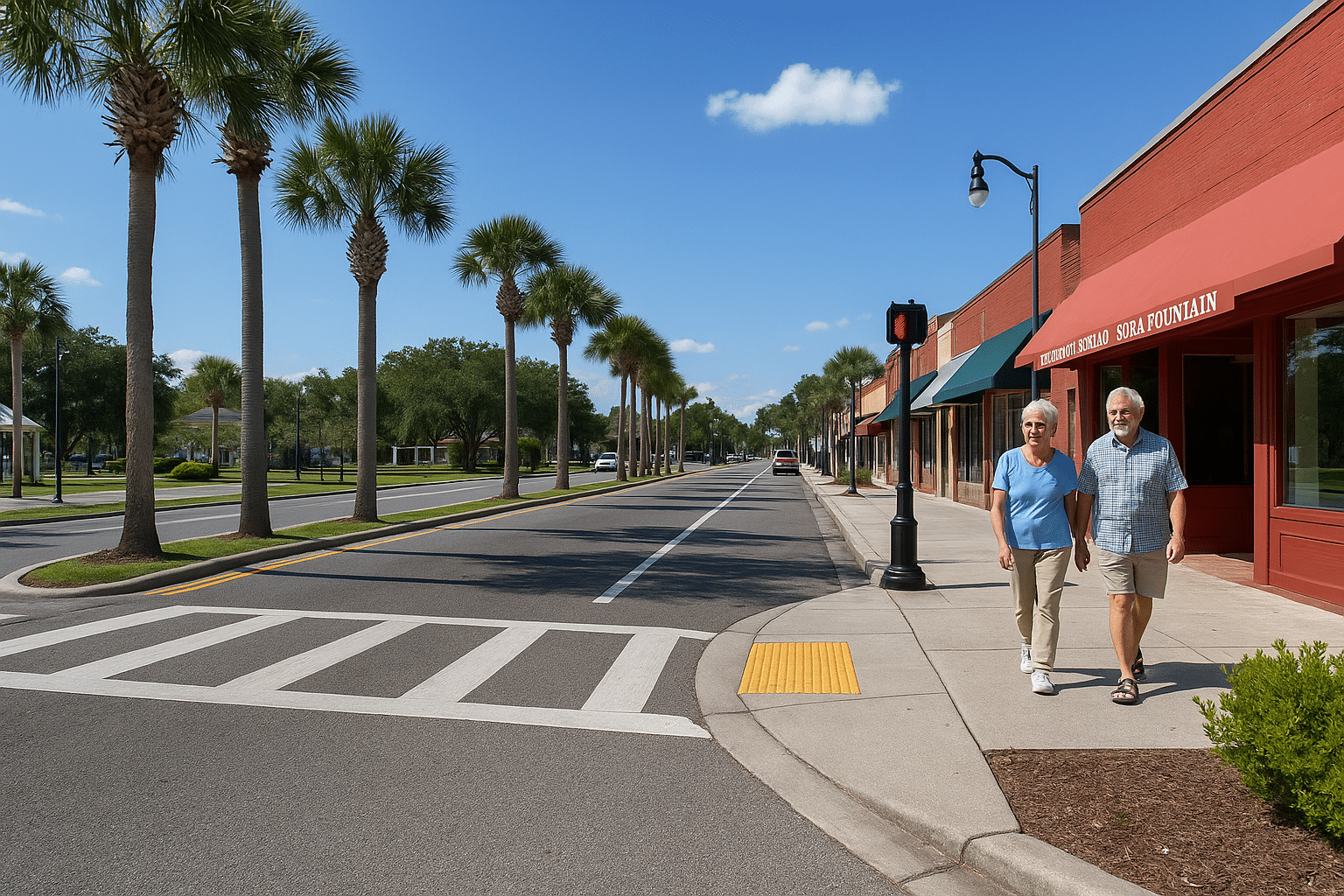|
Getting your Trinity Audio player ready...
|
Hernando, Florida is a top 10 safest city for pedestrians, a distinction that sets it apart in a state known for some of the most dangerous roads in the country. While many Florida cities continue to struggle with high pedestrian fatality rates, Hernando’s ranking signals the city’s commitment to smart urban design, consistent enforcement, and community awareness, according to this study showing the most and least dangerous cities for pedestrians. Pedestrian safety doesn’t happen by accident. It requires deliberate planning, infrastructure investment, and collaboration between policymakers and residents. In Hernando, these efforts appear to be paying off, creating a city where walking isn’t just possible but safe and enjoyable.

Pedestrian Safety in the Broader Florida Context
Florida has long grappled with pedestrian safety concerns. In 2023 alone, the state recorded more than 10,000 pedestrian-vehicle accidents, with hundreds of fatalities and thousands of injuries. Year after year, Florida ranks among the most dangerous states for pedestrians, with cities such as Orlando, Tampa, and Miami often appearing on national lists of high-risk areas.
Against that backdrop, Hernando’s strong performance stands out as an exception. While Florida as a whole has struggled to make progress in reducing pedestrian accidents, Hernando has proven that local policies can make a measurable difference. The city’s low crash rates and strong safety record indicate that thoughtful planning and consistent enforcement can counteract statewide trends and improve everyday conditions for residents.
What Makes a City “Safe for Pedestrians”?
According to safety research and urban planning experts, several key factors contribute to pedestrian safety rankings. Cities with low per-capita incident rates usually share certain features, such as extensive sidewalks, marked crosswalks, pedestrian-friendly signals, and slower traffic speeds.
Effective infrastructure, like flashing beacons, refuge islands, and raised intersections, helps ensure that drivers and pedestrians can safely share the road. Enforcement and education also play major roles. Communities that promote awareness of crosswalk laws and penalize distracted or speeding drivers tend to see steady reductions in accidents over time.
Beyond physical improvements, consistency is crucial. Safe cities maintain low pedestrian injury rates over multiple years, demonstrating a culture of safety rather than a temporary improvement. Hernando’s appearance in the top ten likely reflects both its infrastructure and its commitment to sustaining these safety standards year after year.
How Hernando Likely Earned Its Ranking
While the report does not detail specific local measures, Hernando’s inclusion suggests several effective strategies. The city likely prioritizes traffic-calming designs such as narrower lanes, curb extensions, and protected crossings to reduce vehicle speed.
Sidewalk coverage appears comprehensive, allowing residents to walk safely between neighborhoods, schools, and commercial areas. Police enforcement of speed limits and yielding laws probably contributes as well, reminding drivers that pedestrians always have the right of way.
Community engagement may also play a part. When residents participate in awareness campaigns or city planning meetings, they help shape environments that favor walking and safety. Combined with Hernando’s smaller size and manageable traffic volume, these initiatives create the conditions that allow the city to excel in national safety rankings.
Conclusion
Hernando’s recognition as one of the safest pedestrian cities in the nation underscores the power of proactive planning and accountability. Even in a state often associated with high accident rates, the city demonstrates that practical improvements, supported by education and enforcement, can protect lives. Its success offers a roadmap for other Florida communities seeking to balance growth with safety.



